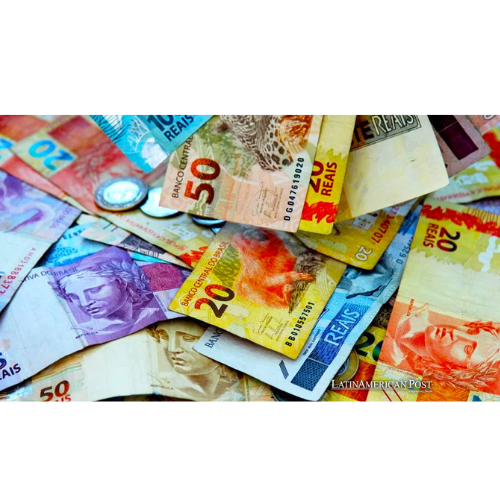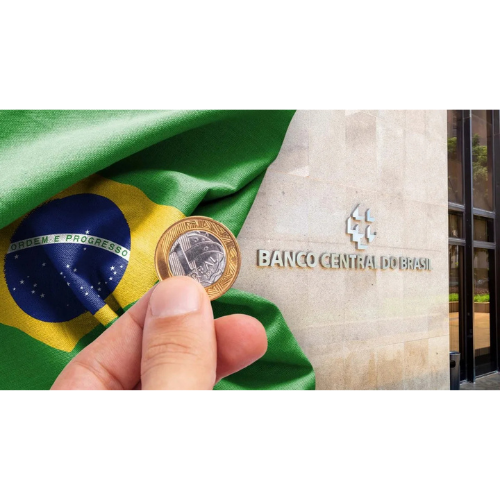Brazil’s Economic Crossroads: Growth Forecasts Cut Amid Currency Volatility
Brazil, Latin America’s largest economy, finds itself at a critical juncture. As of today, September 8, 2025, the country is grappling with a sharp revision of its economic growth forecasts, triggered by persistent currency volatility and mounting fiscal pressures. The Brazilian real, which had already lost significant ground in late 2024, remains unstable, casting a shadow over investor confidence and macroeconomic planning.
A Currency Under Pressure
The Brazilian real has been on a rollercoaster ride over the past year. After a nearly 9% devaluation in the final quarter of 2024, the currency has struggled to regain stability. While the real is currently trading flat against the U.S. dollar, the underlying volatility remains a concern for economists and investors alike.
Currency instability in Brazil is not new, but the current episode is particularly troubling due to its timing. The global economy is in a fragile recovery phase, and emerging markets are under increased scrutiny. Brazil’s exposure to commodity exports—especially soybeans, iron ore, and crude oil—makes it vulnerable to external shocks. A weak real inflates import costs, fuels inflation, and complicates monetary policy.
Growth Forecasts Revised Downward
The Banco Central do Brasil recently issued a revised GDP forecast for 2025, lowering expectations from 2.8% to 1.9%, citing weaker domestic demand, tighter credit conditions, and reduced fiscal stimulus. This stands in contrast to the International Monetary Fund (IMF), which maintains a more optimistic projection of 2.1%.
However, many analysts argue that even the IMF’s forecast may be overly generous. Consumer confidence has dipped, industrial production is stagnating, and unemployment remains stubbornly high at 9.3%. The government’s efforts to rein in inflation through higher interest rates have cooled spending but failed to stabilize the currency.
Policy Paralysis or Strategic Patience?
Brazil’s economic policy framework is caught between two competing imperatives: controlling inflation and stimulating growth. The central bank has maintained a hawkish stance, keeping the Selic rate at 13.25%, one of the highest among major economies. While this has helped contain inflation—currently at 4.7%, down from 6.2% a year ago—it has also choked credit availability and dampened investment.
On the fiscal side, President Luiz Inácio Lula da Silva’s administration has pledged to maintain a primary surplus, but political pressures are mounting to increase social spending ahead of the 2026 elections. The tension between fiscal discipline and populist demands is creating uncertainty, which in turn fuels market volatility.
Critics argue that Brazil’s policymakers are too reactive, lacking a coherent long-term strategy. The absence of structural reforms—particularly in taxation, labor flexibility, and infrastructure—continues to weigh down productivity and investor sentiment.

Regional and Global Implications
Brazil’s economic health is not just a domestic issue—it has regional and global consequences. As the anchor economy of South America, Brazil’s slowdown affects trade flows, investment patterns, and currency dynamics across neighboring countries like Argentina, Chile, and Paraguay.
International investors are watching closely. Brazil is a key player in the BRICS bloc and a major supplier of commodities to China and Europe. A prolonged period of economic instability could disrupt supply chains and alter geopolitical alignments.
Moreover, Brazil’s currency woes are contributing to broader concerns about emerging market debt sustainability. With over $300 billion in external debt, much of it denominated in dollars, a weak real increases repayment burdens and raises the risk of capital flight.
Structural Weaknesses Exposed
While short-term factors like global interest rates and commodity prices play a role, Brazil’s current predicament is rooted in deeper structural issues:
- Overdependence on commodities: Brazil’s economy remains heavily reliant on raw material exports, making it vulnerable to price swings and external demand shocks.
- Low productivity growth: Despite a large labor force, Brazil’s productivity gains have been minimal, hampered by outdated infrastructure and bureaucratic inefficiencies.
- Political fragmentation: The country’s polarized political landscape makes consensus on economic reforms difficult, leading to policy drift and investor hesitation.
- Weak institutional capacity: Regulatory uncertainty and inconsistent enforcement of contracts deter foreign direct investment and stifle innovation.
These challenges are not new, but the current crisis has magnified their impact. Unless Brazil undertakes bold reforms, it risks falling into a cycle of low growth, high inflation, and chronic instability.
Opportunities Amid the Turmoil
Despite the gloomy outlook, Brazil has untapped potential. The country boasts vast natural resources, a young population, and a growing tech sector. If harnessed effectively, these assets could drive a new wave of inclusive and sustainable growth.
Key opportunities include:
- Green energy transition: Brazil is a leader in biofuels and hydropower. Investing in clean energy could attract ESG-focused capital and reduce dependence on fossil fuels.
- Digital transformation: Fintech and e-commerce are booming in Brazil. Supporting startups and improving internet infrastructure could boost productivity and financial inclusion.
- Regional integration: Strengthening trade ties within Mercosur and Latin America could diversify export markets and reduce reliance on China and the U.S.

Brazil’s economic crossroads is more than a temporary setback—it’s a moment of reckoning. The country must confront its structural weaknesses, recalibrate its policy mix, and embrace reform if it hopes to regain stability and unlock long-term growth.
The world is watching. Investors, policymakers, and citizens alike are asking: Will Brazil rise to the challenge, or will it continue to stumble under the weight of its own contradictions?
